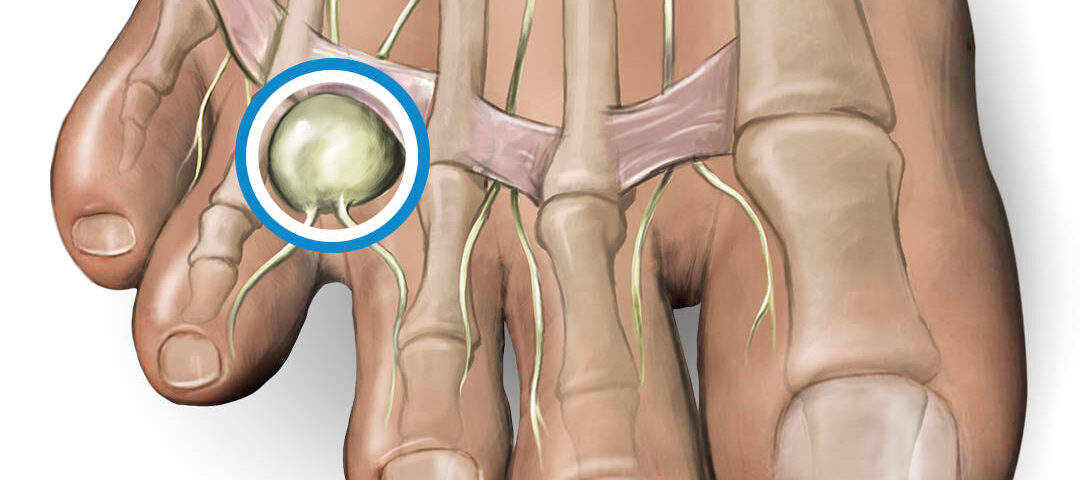Neuroma Foot Treatment

Love hate relationship with high heels
May 1, 2024
Why do elderly people fall and break bones easier than young people?
May 1, 2024Neuroma foot treatment aims to alleviate the pain and discomfort caused by a neuroma, which is a benign growth of nerve tissue, commonly occurring between the third and fourth toes (Morton’s neuroma) or between the second and third toes.
The condition can cause sharp, burning, or tingling pain in the ball of the foot and toes. Treatment options for neuroma may include:
- Rest: Reducing or avoiding activities that worsen the pain can help in the healing process.
- Footwear Modifications: Wear shoes with a wide toe box and low heels to reduce pressure on the affected area. Avoid high heels and narrow, tight-fitting shoes that can aggravate the condition.
- Orthotics: Custom orthotic inserts or over-the-counter metatarsal pads can help relieve pressure on the affected nerve and improve foot mechanics.
- Ice: Applying ice packs to the painful area can reduce inflammation and provide temporary pain relief.
- Medications: Non-steroidal anti-inflammatory drugs (NSAIDs) may help in reducing pain and inflammation associated with neuroma.
- Corticosteroid Injections: Steroid injections can be administered to reduce inflammation and alleviate pain in the affected area.
- Physical Therapy: Stretching and strengthening exercises can improve foot mechanics and reduce pressure on the nerve.
- Alcohol Sclerosing Injections: In some cases, alcohol sclerosing injections may be used to shrink the neuroma.
- Change in Activities: Avoid activities that put excessive pressure on the foot and aggravate the neuroma, such as high-impact sports or activities that involve repetitive pounding of the feet.
- Padding: Using pads or cushions in the shoes can help reduce pressure on the neuroma and provide some relief.
- Ultrasound Therapy: Ultrasound treatment may help reduce inflammation and pain in the affected area.
- Extracorporeal Shock Wave Therapy (ESWT): ESWT is a non-invasive treatment that uses shock waves to stimulate healing and reduce pain in certain foot conditions, including neuromas.
- Surgical Intervention: If conservative treatments do not provide relief, surgical removal of the neuroma may be considered. During the procedure, the affected nerve is removed or released to relieve pressure.
It’s essential to consult a podiatrist or foot specialist for a proper diagnosis and individualized treatment plan for neuroma foot pain. Early intervention and appropriate treatment can help manage the symptoms and prevent the condition from worsening.



